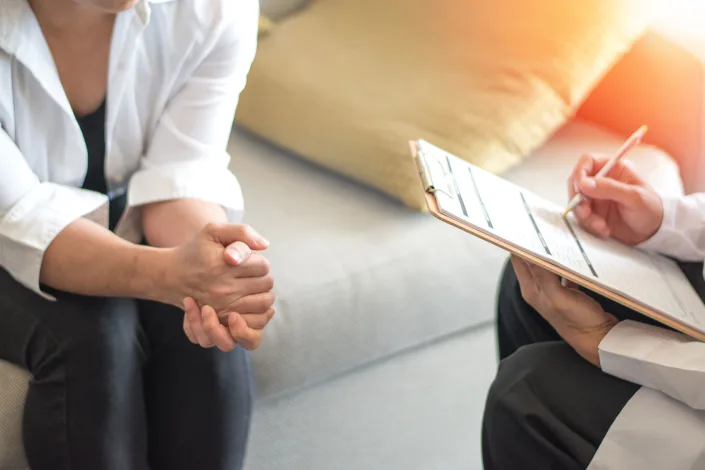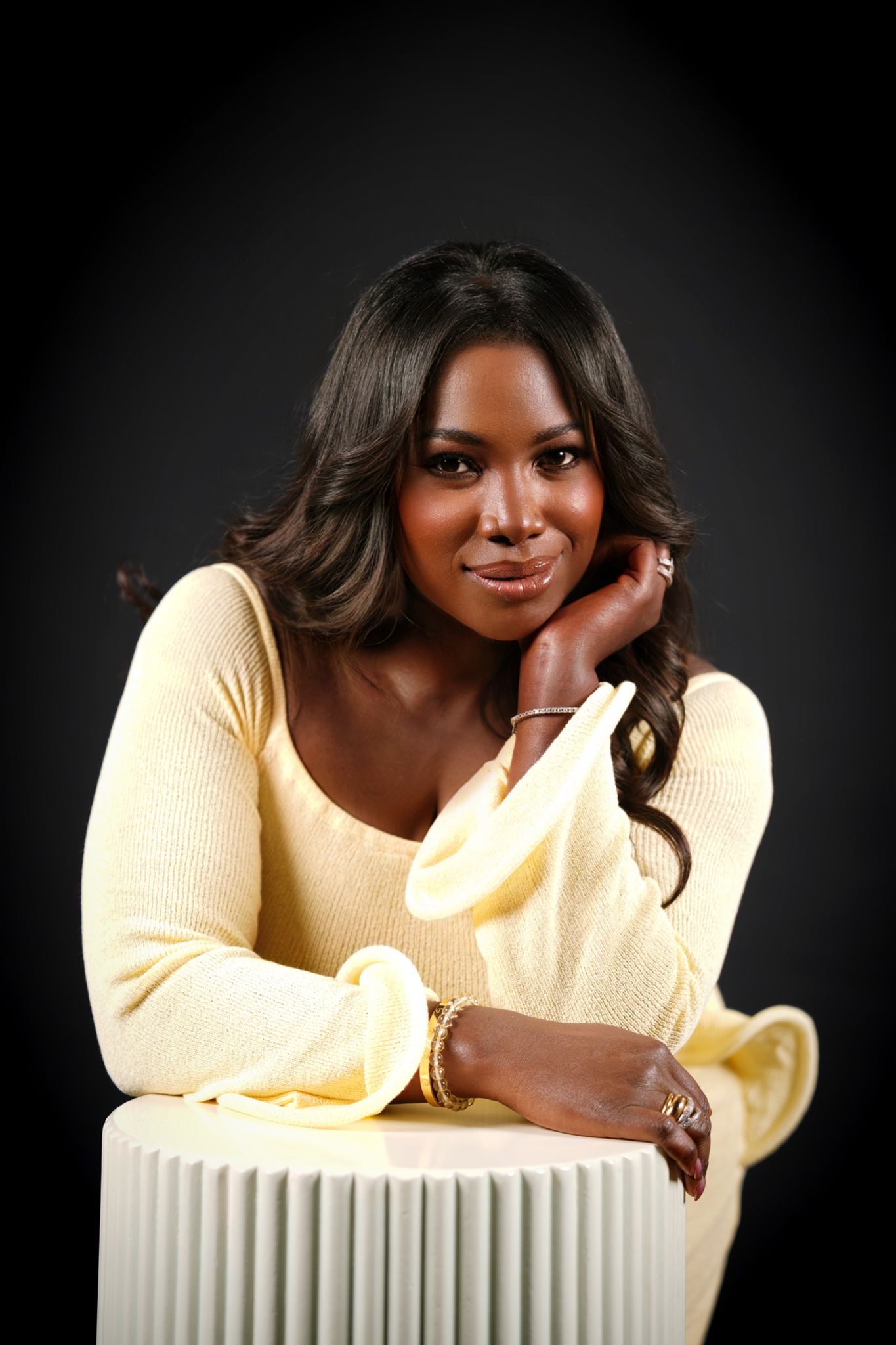Ten years ago, when Emily Stoddard was in her late twenties, she asked her therapist if they thought she might have attention deficit hyperactivity disorder (ADHD.) Working tirelessly for a non-profit, often sleeping only four hours a night and forgetting to eat meals, Emily wondered if her restlessness and tendency to “hyperfocus” only on work for 12 to 14 hours at a time, which led to said sleeplessness and negligent starvation, could have to do with ADHD. Her therapist pushed back, pointing to Emily’s history of trauma as the clear culprit for her difficulties.
“It was very disorienting,” Emily remembers, to be dismissed by someone she’d come to for her help. She didn’t see her therapist again, even though she was having suicidal thoughts and desperately needed support.
In the years between that destabilizing therapy session and her eventual ADHD diagnosis, in 2020, from a thorough and sensitive psychologist, Emily struggled. The diagnosis was an immense relief, and set her on a path towards effective treatment, but the damage had been done.
Related
The woeful history of ADHD, the condition that once got you branded as “defective”
“The risk of not knowing you have ADHD isn’t just a few more years of misplacing your keys or talking out of turn,” Emily explained. “It’s relationships lost, jobs lost, a very harsh inner life, and sometimes even questioning whether you should keep going at all.”
Emily’s story is painful, but far from unique. We now know that ADHD often presents differently in girls and women – displaying more inattention and anxiety, less hyperactivity and more compensatory skills that make them even more likely to go under the radar. Still, as a diagnosing psychologist myself, and later, a woman with my own late-stage ADHD diagnosis, I have heard practitioners, behind closed doors, deride young women who seek an ADHD diagnosis, labeling them malingerers because of their otherwise successful lives. And, like in Emily’s case, what doctors and mental health professionals tell their female patients directly about an ADHD diagnosis can be just as dismissive, not to mention inaccurate.
A recent systematic review in the Journal of Attention Disorders titled “Miss. Diagnosis” attempts to quantify the impact of missed ADHD diagnoses for girls and women. Its authors, Darby Attoe and Emma Climie, conducted a literature review of studies of women with ADHD, separating out participants who didn’t receive a diagnosis until adulthood, to try and determine the impacts of living with a disorder that has not been recognized, or has been mislabeled. Their findings were striking.
We now know that ADHD often presents differently in girls and women – displaying more inattention and anxiety, less hyperactivity and more compensatory skills that make them even more likely to go under the radar
The fact that ADHD-diagnosed women were more likely than the general population to have low self-esteem, difficulty with relationships, and histories of emotional challenges, such as depression, was not news. But the researchers also found that undiagnosed women not only had more of these risk factors, but also tended to blame themselves more significantly for their challenges.
As the authors describe, “Lacking a better explanation, perceived personal flaws could become the reason for academic, social, and emotional struggles, resulting in self-blame and a negative self-image.”
The study’s co-author, Emma Climie, shared that many women whose stories they pored over felt that a diagnosis at an earlier age would have been “life changing.” Once they were diagnosed, most felt incredible relief and validation, and were able to begin the journey towards self-acceptance.
Want more health and science stories in your inbox? Subscribe to Salon’s weekly newsletter The Vulgar Scientist.
Some of these women were “missed” while others were blatantly refused treatment. There is nothing like seeking out a professional because you feel something is wrong with you and then being told you’re making it all up because you simply can’t handle the demands of modern life, work or motherhood. I have now spoken to dozens of women who told me tales similar to Emily’s and added detail to the findings of the “Miss. Diagnosis” study.
Lucy, for example, was diagnosed in her late twenties. As a child, she scored well on tests but refused to do anything she found boring and suffered from intense procrastination. She pulled her first all-nighter in second grade working on a report for a Roald Dahl book. In college, she wrote her thesis over four uninterrupted days and nights, fueled by a friend’s Ritalin. Lucy never did her best on anything, because she couldn’t get started until “the panic set in.” But no one flagged her as having ADHD, even though she feels in hindsight that it couldn’t have been more clear.
There is nothing like seeking out a professional because you feel something is wrong and then being told you’re making it all up
Because she also suffered from chronic pain and depression later on, all of Lucy’s apparent ADHD symptoms were attributed to other causes, as had been done with Emily’s history of trauma. “I think the doctors thought my depression was hurting my executive function,” she explained, “but no one considered how my executive dysfunction fed into my depression.”
A new therapist finally helped Lucy unpack her challenges, until they arrived at the ADHD verdict. By then she had made it through law school, an accomplishment that might disqualify her from having ADHD in some practitioner’s eyes, as functional impairment is a critical requirement for diagnosis, though it is often only framed in external markers. But despite her degree, Lucy’s internal experience was exhausting and she was left feeling “like a lazy, stupid, self-defeating failure.”
Amanda, a clinical psychologist, was diagnosed while in graduate school. Her brother, who presented with the more traditional, hyperactive version of ADHD, was diagnosed 15 years earlier. Amanda’s psychology classmates, who were studying ADHD diagnosis and intervention at the time, were skeptical.
Many of the stories ADHD women share online are absolutely in line with current research and best practices on how ADHD can present in girls and women
“They didn’t understand that ADHD is really about dysregulated or variable focus,” Amanda told me. She says there weren’t frameworks then for considering what ADHD looked like in adults, particularly women. Even now, many people are surprised when she tells them she has ADHD. “They think, you’re a doctor, you’re so successful!”
But, especially now in perimenopause, when ADHD symptoms often worsen, Amanda struggles considerably with motivation swings and cognitive fog, and has difficulty finding resources meant to help older women with ADHD.
Much has been said in the media in the past few years about the explosion of ADHD diagnoses for women. Some claim that TikTok is serving people ADHD diagnoses like an ad for sex-positive lingerie. But according to reporting by Self, others are thanking their lucky stars that an internet algorithm reflected their identity back to them, because no professional seemed to have the training or chutzpah to do so. Either way, it is fascinating, and somewhat damning of the psychological profession, of which I am a part, that an app mostly intended as a platform for Selena Gomez to demonstrate how to apply her tinted lip oils has become the leading place women turn for the mental health support that they cannot find elsewhere.
To understand more about what needs to happen to make official, earlier ADHD diagnoses a possibility for women, I spoke with Dr. Andrea Chronis-Tuscano, who directs the University of Maryland’s SUCCEEDS College ADHD Clinic and has researched and written about ADHD for years. Last year, Chronis-Tuscano published a “call to action” in the Journal of Child Psychology and Psychiatry, urging her peers to do better around diagnosing and supporting girls and women with ADHD, who longitudinal studies have linked to concerning outcomes such as increased rates of self-harm, partner violence and mental health challenges.
In her commentary, Chronis-Tuscano calls for more widespread understanding among practitioners of how ADHD can look different in girls and women, and more training in how to differentiate ADHD from other conditions like depression, anxiety, and trauma. You’ll find these topics discussed on numerous forums and blogs, like René Brooks’ “Black Girl, Lost Keys” and Emily Stoddard’s own “Creative Attention.”
Many adult women are coming to terms with their own undiagnosed ADHD through an unlikely source — their own children
Many of the stories ADHD women share online are absolutely in line with current research and best practices on how ADHD can present in girls and women. Many women have found these discussions and testimonials life-changing. And yet, as reflected in the TikTok-inspired self-diagnoses, actual professionals — who have the actual power to identify and support ADHD — aren’t spending enough time learning about them.
Such training could help women like Elissa, 37, who knows she has ADHD but still can’t get an official diagnosis because her health care required her to choose between treating her depression and anxiety or getting an ADHD assessment.
“I know that all these things (ADHD, depression and anxiety) can exist in a person,” Elissa insisted, “and I know that ADHD symptoms can look like depression/anxiety symptoms at times as well, especially in girls.”
Aside from the internet, many adult women are coming to terms with their own undiagnosed ADHD through an unlikely source — their own children. Elizabeth had identified media depictions of ADHD for years, but was told she shouldn’t self-diagnose. Her therapist insisted that her concerns were all related to anxiety. But when she began reading intensively about ADHD to support her newly-diagnosed daughter, she could no longer ignore the similarities.
“My daughter was disruptive, which is why her teachers and school pushed us to get her help. I was the classic girl who nobody noticed was quietly struggling,” Elizabeth said. She pursued a diagnosis through a private neuropsychologist, but, like other women I spoke to, found the process of getting a diagnosis — the waiting, the paperwork, the phone calls and follow-ups with insurance — to be like “ADHD kryptonite.” When she finally got her diagnosis, Elizabeth’s therapist refused to keep seeing her. Now she has a new therapist who understands and respects her ADHD and, after some trial and error, found an effective medication, which has been a “literal godsend.”
When Chronis-Tuscano noticed this phenomenon in her own ADHD clinic, she realized she needed to do something about it, saying “Moms brought their kids to these appointments, and they would be like, ‘Oh my gosh, this sounds just like me!'”
Both Chronis-Tuscano and Climie insisted that there needs to be greater effort to study and treat ADHD in more marginalized populations
Chronis-Tuscano began looking at ADHD in women, particularly in mothers, and how having ADHD impacts parenting, especially when your child or children also have ADHD. Often, she explains, ADHD mothers become demoralized by the increased structure and consistency required in parenting an ADHD child, as these have never been their strong suits. Chronis-Tuscano has been working on an initiative that would encourage screenings for ADHD at gynecology visits, as a way to identify and support women before they take on the added challenges of parenting.
Now that Elissa, who “chose” therapy for her depression over an ADHD evaluation, has a third child, she told me that she is struggling more than ever with parenting. A good diagnosis, and support for her ADHD through her health insurance, would likely make a difference.
Chronis-Tuscano sounded both hopeful about the medical and psychological establishment’s ability to do better by ADHD women and also very aware of how over-taxed these systems are already. She feels that targeting pediatricians and schools and increasing their capacities to screen and treat girls when they are young is the way to make the greatest impact. In her community research and in her clinic, which helps ADHD college students develop executive functioning skills, self-esteem and awareness, she also notices that cultural differences often shape the ways that someone arrives at their ADHD, lamenting the lack of attention to this in research, as well as the lack of representation among clinicians.
It would be devastating to learn from the mistakes of the past solely for the benefit of white, middle-class women
Both Chronis-Tuscano and Climie insisted that there needs to be greater effort to study and treat ADHD in more marginalized populations, such as women of color, transgendered folks and individuals with low income. It would be devastating to learn from the mistakes of the past solely for the benefit of white, middle-class women.
This “marginalization within the marginalization” of ADHD is already visible. When Joy, who is Black, identifies as AFAB and uses the pronouns ey/em, began pursuing an adult ADHD diagnosis, ey had to pre-empt mistreatment with doctors. “I am very clear in medical spaces that I’ll brook no implicit bias in my treatment.” Joy insisted that the doctor walk through everything in fine detail, and luckily, he understood.
Alina, who was diagnosed with ADHD at 35, and whose parents immigrated to the U.S. from India before she was born, feels she may have received help for her ADHD earlier if there was better representation in the media of who ADHD affected. Growing up, she explains “ADHD was regarded as a white kid problem. It was really easy to say ‘wow, this is a white American parenting failure.’ But that isn’t true. We didn’t see it as a mental health concern and just used a lot of coping mechanisms to not show obvious symptoms.”
Ultimately, the challenges many face in getting ADHD diagnoses appear to be both about lack of knowledge and of good practice. While there is so much to uncover about who has ADHD, how it affects them, and what to do about it, trainings and improved diagnostic tools are out there, if only more therapists, diagnosing clinicians, and health care systems would prioritize them.
Though some may be concerned about the risk of overdiagnosis of ADHD, it stands to reason that if more women get skilled evaluations, fewer will attach themselves to a label that might not be quite right for them.
“Trying to find your way with unrecognized ADHD can feel like breaking your own heart over and over again.”
In addition to some old classics, new books about girls and women with ADHD can provide major guidance for professionals. ADDitude magazine recently published an article, geared towards diagnosticians co-authored by Chronis-Tuscano, Dr. Stephen Hinshaw and Dr. Ellen Litman, that outlines how to make ADHD assessments more sensitive to the presentations found in girls and women. The field may seem nascent, but it is by no means empty of information.
Dr. Liz Angoff, author of “The Brain Building Book” and a practicing educational psychologist in the San Francisco Bay Area who assesses children and teens, says she’s gotten better at diagnosing girls and young women with ADHD by listening to them.
“Considering the changing landscape, I think it’s wisest to approach these cases with curiosity and humility,” she says. Angoff augments the research, which she stays up-to-date on through professional talks and podcasts, with the testimonials of adult women with ADHD that she sees on social media, as well as the inner experiences of her clients.
“Trying to find your way with unrecognized ADHD can feel like breaking your own heart over and over again,” Emily told me. She believed that as she shared her struggles with professionals someone would see it — but they didn’t.
Lucy, the lawyer, echoed this regret. “It should have been flagged when I was a kid,” she lamented over text. “If I had a nickel for every adult in my life who told me I wasn’t living up to my potential…” she trailed off, adding an “eyeroll” emoji.
Perhaps with added urgency from both researchers and the general population, those who have the power to give such a life-saving diagnosis will start living up to theirs.











